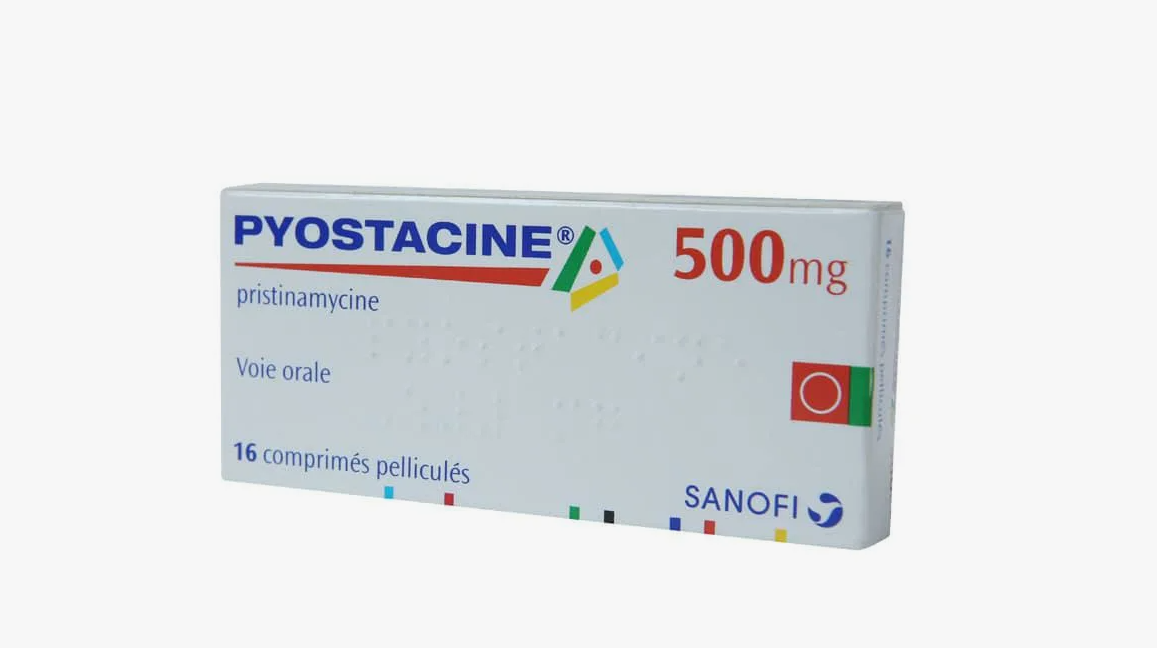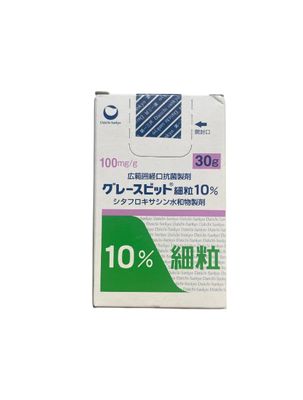Pyostacin (Pristinamycin) 500mg 16 tab.
62,00 €
antibiotic
In stock
Save this product for later
Customer reviews
Reviews only from verified customers
No reviews yet. You can buy this product and be the first to leave a review.
Pyostacin (Pristinamycin) 500mg 16 tab.
Product Details
Pyostacin (Pristinamycin) 500mg 16 tab.
PYOSTACIN 500 MG, FILM-COATED TABLETS
Pristinamycin (8000 units/mg) 500.00 mg per film-coated tablet.
The DOSAGE FORM is a film-coated tablet.
INDICATIONS FOR USE
PIOSTACIN 500 MG is indicated for adults and children for the treatment of upper respiratory tract: sinusitis, acute exacerbation of chronic bronchitis, pneumonia of mild and moderate severity, as well as skin and soft tissue infections.
METHOD OF APPLICATION
Adults
acute maxillary sinusitis 1 g 2 times a day for 4 days
acute exacerbation of chronic bronchitis 1 g 3 times a day for 4 days
community-acquired pneumonia of mild to moderate degree 1 g 3 times a day from 7 to 14 days
infections of the skin and soft tissues from 1 g 2 times a day to 1 g 3 times a day from 8 to 14 days
In severe cases, the dose can be increased to 4 g / day.
Children
The dosage is 50 mg / kg of body weight per day, divided into two or three doses. In severe infections, this dose can be increased to 100 mg/kg/day. The dosage for children should not exceed the dosage for adults. Patients with renal insufficiency In patients with renal insufficiency, no dosage adjustment is required, since renal excretion of pristinamycin is low.
METHOD OF APPLICATION
Oral administration This drug should be taken with meals.
Contraindications
Hypersensitivity to pristinamycin, other streptogramines or to one of the excipients
Acute generalized exanthematous pustulosis in the anamnesis that occurred after taking pristinamycin
Wheat allergy (except celiac disease). Simultaneous use of pristinamycin and colchicine
Lactation period
Special instructions and precautions for use in infections caused by bacterial infection Sinusitis, the effectiveness of pristinamycin has been demonstrated in the treatment of acute maxillary sinusitis, while efficacy in chronic sinusitis has not been confirmed by clinical trials. Sore throat Pristinamycin is not suitable for the treatment of sore throat. In a clinical study conducted for angina in adults and children, in which pristinamycin (2 g/day in adults and 50 mg/kg/ day in children for 4 days) and amoxicillin (2 g/ day in adults and 50 mg/kg/day in children for 6 days) were compared They showed that the eradication rates of beta-hemolytic streptococcus group A, as a rule, were more favorable for amoxicillin than for pristinamycin (the difference between the two groups was 48%).
Hypersensitivity reactions, including Quincke's edema and anaphylactic shock, may occur when taking pristinamycin,
which may pose a threat to life. In these cases
, treatment with pristinamycin should be discontinued and appropriate medication should be prescribed.
If generalized febrile erythema occurs at the beginning of treatment, accompanied by blisters,
generalized acute exanthematous pustulosis should be suspected. In this case
, treatment should be discontinued and repeated use of pristinamycin is contraindicated. Previously performed local treatment
or systemic sensitization caused by virginiamycin is possible.
This drug can be prescribed to patients with celiac disease. Wheat starch may contain gluten,
but only in trace amounts, and therefore is not considered dangerous for patients with celiac disease.
Pediatric population group
Children under 6 years of age should not take pills, as this can lead to suffocation.
There are no other dosage forms based on pristinamycin suitable for young children.
Interaction with other drugs and other forms of interaction
Contraindicated combinations
. Colchicine
Increased side effects of colchicine with potentially fatal consequences.
Combinations that require taking precautions when using
. Immunosuppressants
An increase in the concentration of an immunosuppressant in the blood due to inhibition of its metabolism in the liver
.
Determination of the concentration of an immunosuppressant in the blood. Monitoring of renal function and
dose adjustment of the immunosuppressant during and after discontinuation of concomitant use.
You May Also Like
Display prices in:EUR

